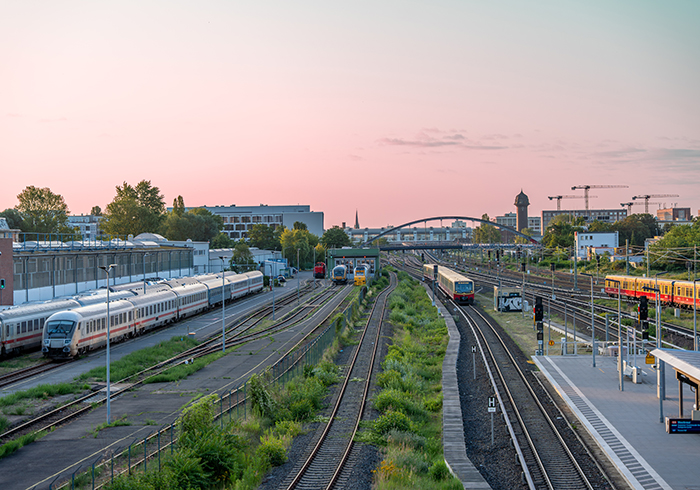In this roundtable discussion, industry experts explore how UK businesses are navigating supply chain disruption, from rising prices and shifting sourcing strategies to stockpiling, localisation, digital dashboards and the urgent need to rethink food chain resilience from source to shelf.
Roundtable participants
- John Aridi, group financial controller, Hilton Food Group
- Mark Douglas, managing director, funding, PrimeRevenue
- Jaya Vohra, global head of trade & working capital product, Barclays
- Shannon Manders, editorial director, GTR (moderator)
GTR: What have been the most significant supply chain challenges or shifts you’ve seen over the past 12 to 18 months, and how are you or your clients responding?
Aridi: Hilton Foods is a protein supplier, primarily focused on red meat and white fish for supermarkets, with operations across Europe, as well as a presence in Australia and New Zealand.
Right now, beef prices are a major driver: beef is up around 30% year-on-year, manufactured beef over 40%, and in Ireland, as much as 50%. This is largely due to reduced herd sizes, particularly in the US, where herd rebuilding is still needed.
On the fish side, inflation has been significant. While salmon prices have started to ease, they remain more than double what they were two years ago. Government regulation has also had an impact. For example, Norway, one of the largest salmon suppliers, introduced new rules for producers but suspended them following market backlash. Restrictions on exports to the US, particularly due to tariffs, could shift volumes toward Asia, potentially affecting availability and pricing in our markets.
White fish has also been hit by inflation and climate change. Scientists have called for a 20% cut in cod quotas, which is likely to drive prices higher. In contrast, haddock stocks are up, with an 18% increase in the recommended catch. This could shift market dynamics; for instance, fish and chip shops may favour haddock over cod due to greater availability.
Another key point is the positive impact of the EU-UK trade deal on cross-border trade, particularly for smaller suppliers. Most routine checks on animal and plant shipments have been scrapped – a major relief for businesses moving goods into Northern Ireland. Previously, even small fish shipments required vet certificates for each container, which was a real administrative burden.
In terms of how the industry is responding, a lot comes down to innovation. Businesses are adjusting to changing consumer behaviour. For instance, people who once went out to restaurants and paid £40-50 for a steak are now more likely to buy a similar product in a supermarket for £15 and cook it at home. So while the foodservice sector may take a hit, retail is seeing a lift as consumers shift their spending.
We’re also seeing more innovation and automation in factories to reduce costs. One of the biggest trends, driven by ongoing global uncertainty, is the rise in inventory buffers; businesses are holding more stock simply because they don’t know when the next crisis will hit.
Vohra: From our side, what we’ve been seeing at an aggregate level is disruption driven by geopolitical tensions and regional conflicts. That’s feeding into broader conversations around supply chain resilience, market shifts and how clients are adapting.
John touched on inflation, and I’d say manufacturing, transport and logistics are particularly impacted, which has led to rising input costs, longer production cycles and clients starting to explore nearshoring options to bring down some of that cost and complexity.
In other sectors, companies are gradually shifting away from suppliers in regions affected by conflict, but rebuilding supply chains and relationships is a costly and strategic process.
Overall, we’re in an environment of prolonged uncertainty. Some clients are delaying longer-term investments or financing decisions, waiting for stability. But increasingly, treasurers are accepting this uncertainty as the new normal and shifting focus from reacting to disruptions to building resilience around them.
This means creating more diversified supply chains and buying strategies, and even preparing for risks such as cyberattacks, which we have all seen have recently impacted some retailers. Stockpiling and inventory buffers are still being used tactically, but the long-term focus is on how to manage risk in a more sustainable and strategic way.

“If top-line growth isn’t on the table, businesses are under pressure to drive efficiency. That’s where we’ve seen increased demand for tools that cut costs, streamline accounts payable processes and improve working capital.“
Mark Douglas, PrimeRevenue
Douglas: I’d say there are three major areas to touch on. The first is interest rates. Over the past two years, we’ve seen one of the steepest global rate hikes on record after a prolonged period of low interest.
At PrimeRevenue, which provides working capital and B2B payment solutions, a key metric we track is the percentage of invoices traded on our platform. For most of our 23-year history, that’s sat at around 74%. When rates spiked, that dropped to 64%, but it’s since rebounded and stabilised around 70% this year. So while there was a temporary dip, supplier appetite hasn’t collapsed. We’ve actually seen renewed interest over the last three to six months, particularly on programmes with lower historical uptake. We expect that to continue through the tail end of the year.
The second area is inflation – no surprise there, as John and Jaya have talked about – and the third is inertia, which has arguably been the biggest issue. Widespread hesitancy to act due to economic uncertainty and policy stagnation, especially in the US, has led to stalled investment and a ‘wait and see’ mindset.
The opportunity in that environment, both for us and our clients, is to focus on cost. If top-line growth isn’t on the table, businesses are under pressure to drive efficiency. That’s where we’ve seen increased demand for tools that cut costs, streamline accounts payable processes and improve working capital. Our automotive clients are a good example: volumes have been completely flat this year, so the only real lever is margin improvement, and that’s where solutions like ours come in.
GTR: Is the much-hyped trend toward nearshoring, friendshoring or localisation playing out in practice, or is it still more narrative than reality? Where are you seeing genuine movement, and how is it impacting cost, complexity or financing strategy?
Aridi: Globalisation was the dominant trend for years, but we’re now seeing a clear shift towards regionalisation, and in some markets, even full localisation. This isn’t just driven by supply chain strategy, but also by cost and consumer preference.
On the cost side, localisation can actually lead to savings. Take packaging, for example: it’s now often cheaper to build a factory locally than to absorb high international shipping costs. That’s made the business case for localisation much stronger in some areas.
Consumer demand is also playing a big role. In Sweden, for instance, customers are asking for packaging made specifically from locally sourced Swedish trees; they don’t want anything imported. The same applies to beef: Swedish consumers are willing to pay a premium for locally sourced meat over imported Latin American beef, even when the latter might be of equal or better quality.
What we’re also seeing – especially from our suppliers – is a more strategic move toward regional diversification. It’s less about shifting everything to one location and more about spreading risk across different production origins. After years of uncertainty – Covid, tariffs, war, etc – some governments are even incentivising localisation or regional production, which further supports the trend.
Vohra: Nearshoring and friendshoring have been widely discussed, but we haven’t seen them take off at scale just yet. That said, they remain important tactical responses. For example, during the Red Sea crisis, some clients shifted to domestic or closer-to-home suppliers to mitigate risk.
In manufacturing, transport and logistics, there is a definite push toward nearshoring. Retailers are also diversifying away from China by sourcing more from India, Vietnam, Bangladesh, Turkey and North Africa; not necessarily closer, but in an attempt to mitigate the geopolitical risk. Still, it’s hard to match China’s cost and scale, so many are adopting a dual strategy for now while they plan for the long term.
Elsewhere, we’ve seen Portugal emerge as a nearshoring option for clothing, and in pharma, some supply chains are shifting to newer, more emerging markets. So it’s a mix: modest nearshoring, regional diversification and a gradual shift that takes time, capital and operational adjustment. All of which adds pressure for treasurers, as John mentioned.
All of this is driving demand for financing, even if economic uncertainty has delayed some larger decisions. We’re still seeing steady appetite for both traditional and open account solutions.
For us, it’s about staying close to clients and understanding what they’re trying to solve, whether that’s structuring solutions around higher inventory or providing risk mitigation as they enter new markets.
Douglas: I’d agree that we haven’t seen nearshoring materialise in volume yet, but we are seeing clear moves to diversify away from China, though it varies by sector. Apparel, for instance, has been shifting production for 10-15 years now, moving from China to places like India, Bangladesh, Turkey and Portugal. There are plenty of options in that space.
In contrast, high-tech industries like automotive face bigger hurdles. China isn’t just cheap, it offers deep expertise and scale, which makes relocation much harder. So while nearshoring is happening, it’s progressing much more slowly than the hype suggests.
Mexico is sometimes cited as a nearshoring option for US automotive, but tariffs have stalled some of that momentum. And again, China’s capabilities are tough to match – cost is almost secondary to know-how in some cases.
From our side, it’s about being where our customers need us. That includes expanding domestic programmes, and we just went live in Brazil, which is a notoriously tough jurisdiction. Localisation also brings FX challenges, but we see real demand for supply chain solutions in local currencies, not just US dollar or euro. We’re also investing in a domestic Chinese solution that meets today’s regulatory requirements.

“We continue to see traditional sectors using familiar products, but there’s also growing momentum in non-traditional areas like life sciences and climate tech.”
Jaya Vohra, Barclays
GTR. As supply chains evolve and new supplier relationships emerge, how are companies rethinking their financing strategies, and which tools or approaches are gaining the most traction?
Vohra: We provide the full suite of trade and working capital solutions, and demand remains strong across the board because each product solves a different need.
Traditional trade has often been seen as outdated, but it still offers vital risk mitigation, especially in uncertain times. We haven’t seen a major spike, but steady demand continues. For example, a UK client recently noted rising interest in letters of credit (LCs) among Chinese importers, so we’re supporting them there. Guarantees are also in demand, particularly as companies explore new markets and face local requirements like VAT guarantees.
We also provide financing off the back of these products – like discounting confirmed LCs for exporters – and those remain strong.
The open account side is evolving fast, and we’re supporting clients with receivables and payables financing. Payment term extensions are a key tool for large corporates, but that puts pressure on suppliers – this is where supply chain finance (SCF) comes in to offer the mitigation that the supply chain needs. This is clear in the rate of adoption of SCF programmes, the sheer number of SCF structures in the market and the growing presence of fintechs. Open account products are highly automated and are supported by fintechs, making it easier for banks to provide and corporates to access working capital.
We continue to see traditional sectors using familiar products, but there’s also growing momentum in non-traditional areas like life sciences and climate tech. We’re actively deploying working capital and financing solutions in these sectors, tailoring them to specific needs, such as milestone-based contracts or bespoke structures.
GTR: John, can you tell us about the trade and working capital solutions Hilton Foods uses, and whether your requirements have changed?
Aridi: We’ve traditionally used supply chain finance, mainly from the perspective of acting as a discounter, working with our customers to discount receivables and receive cash faster. But now we’re also looking at it from the other side, offering supply chain finance to our suppliers. So we’re both users and developers of the process.
Another area we’re exploring is inventory finance as a way to support that additional working capital requirement.
GTR: How is technology helping companies gain better visibility, unlock liquidity or streamline decision-making across the supply chain? Has Hilton Foods made any recent changes to its systems or processes in response to supply chain pressures?
Aridi: What we’re seeing now is more supply chain control towers – dashboards and integrated logistics tools – so we can track everything from production right through to order fulfilment. As our factories become more automated, we need better technology to visualise and manage what’s happening.
We’re also focused on traceability. There’s a growing requirement that if you eat a hamburger, you should be able to trace it back to the exact cow and even the field it came from. With longer supply chains, that level of transparency is critical, and technology is key to making it happen.
We’re also starting to look at treasury systems differently. Instead of standalone platforms, we’re working to integrate treasury into our ERP to have everything in the same ecosystem. That means linking trade finance with forecasting, procurement, supply payments and inbound inventory.
Shared portals with suppliers are also becoming more common, giving us live data we can pull directly into our systems. A key focus is enabling early payment requests through these platforms.
GTR: Mark, what are you seeing in terms of ERP integration and treasury connectivity? Are suppliers being brought more actively into these systems?
Douglas: The key is connectivity and trying to bring all these systems together. The ERP sits at the centre, and the challenge is integrating everything around it to generate meaningful insights and support better decision-making.
Different businesses are at different stages on that journey. Some are way ahead of the curve, others have a long way to go. But one consistent gap we see is that suppliers are often left out of that financial ecosystem. There’s a huge opportunity to bring them in, give them transparency into what their customer is doing and let them act on that information.
A big focus for us is the difference between electronic and digital payments. Electronic is just the transfer of funds; digital includes the data around that: when you’re being paid, what deductions apply, if a credit note has been issued. That’s what makes it powerful.
Payment is often the biggest source of friction in supply chains. Delays can create serious issues, even if suppliers don’t speak up. Automating payments and giving the option for early payment – even on longer terms – helps reduce that friction and builds real trust. That’s what shifts the relationship from transactional to long-term partnership.
GTR: We’ve spoken about how technology is driving greater connectivity and transparency; how is that influencing funding decisions and the flow of finance to suppliers?
Vohra: As John and Mark mentioned, we’re seeing much more connected ERP and treasury systems. In invoice financing, that connectivity is key, and most of our data now comes directly from clients’ ERP systems. That gives us real-time visibility on invoice levels and allows us to fund accordingly, while reducing internal overheads and helping manage risk more efficiently in the open account space.
Working with fintechs like PrimeRevenue helps streamline the process. They handle supplier requests, and we push out the payment. It’s a strong example of front-to-back integration enabled by tech.
But in traditional trade, there’s still another step. Whether or not a transaction comes through a bank, you’re still dealing with shipping documents and logistics. That physical supply chain – tracking shipments and reviewing underlying goods and parties, for instance – needs to be integrated too. Linking compliance, logistics and financial systems can help companies respond more quickly to disruptions.
And then, specifically in the retail and wholesale space, omnichannel strategies are adding new challenges. Companies need full visibility across inventory, orders and distribution. So it’s not just about financial supply chain integration, it’s also about making sure goods reach customers when and where they need them. The technology evolution and vision for transformation across the industry have to support both.
GTR: What do you see as the biggest barriers to adopting more digital and connected supply chain models? And what’s worked in your experience when it comes to overcoming those hurdles?
Aridi: As Mark touched on, outdated ERP systems are still a big issue – many just aren’t built for integration, so you end up spending more time and money trying to stitch everything together. That said, we’re seeing a shift toward cloud-based, software-as-a-service (SaaS) models, which help by pushing automatic updates and reducing reliance on custom middleware.
Another big one is data inconsistency. If you’re a global company, you’re almost guaranteed to have fragmented data across regions and systems. My advice: prioritise clean data from the outset – it saves so much pain down the line.
Then there’s organisational complexity. Digital is just one of many change agendas companies are juggling. You’ve got sustainability, regulatory shifts like Provision 29 of the UK Corporate Governance Code [related to the monitoring of risk management and internal controls], compliance updates across jurisdictions – all competing for leadership attention and resources.
And finally, cyber risk can’t be ignored. We’ve all seen what happened with some major retailers in the UK. Even if your own systems are secure, once you start connecting with suppliers, your exposure is only as strong as their defences. If their email gets compromised, that vulnerability becomes yours. It is about building resilience and defences in your systems.
Douglas: That’s a really important point. One of the biggest vulnerabilities our customers highlight is payment fraud. You can have the most robust systems in place, but if you’re working with hundreds or thousands of suppliers and there’s no secure, consistent way for them to update something as simple as bank details, you’re exposed. We’ve heard plenty of stories – someone phones into accounts payable with what looks like perfect documentation, and it’s totally fraudulent. These scams are sophisticated, and without the right tools, they’re nearly impossible to spot.
Interestingly, our solution’s consistent approach to uploading and processing supplier data across all regions has also made us particularly strong at preventing fraud, though that wasn’t necessarily the initial goal. We’re not trying to be a cybersecurity firm, but security is baked into our culture – we have to hold ourselves to the highest standards to work with partners like Barclays.

“One of our procurement leads said something that stuck with me: price is irrelevant if you can’t get the materials you need to make your product. That’s the lens through which we look at supply chains.”
John Aridi, Hilton Food Group
Vohra: Digitalisation is happening across corporates, banks and supply chains, but the challenge is focus: making the right investment case and prioritising where your business will get the most value.
John made a great point on data consistency. That’s critical within individual companies – but when it comes to cross-border trade, the issue is even bigger. If every organisation uses its own data standards, it becomes difficult to drive real automation. That’s why the industry is working on common standards that corporates can adopt, whether their trade goes through banks or happens on open account terms. It’s about enabling better flow of information, and we’re starting to see progress there.
From our side, we’ve replatformed our trade and working capital business using cloud-based, SaaS technology, and many others are taking a similar approach. But the next step is about connecting those systems across the ecosystem. We need to see developments like e-invoicing and digital identities mature, which would help us as financiers fund deeper into the supply chain, because then we’d have better visibility into counterparties and could manage risks like financial crime more effectively.
GTR: To wrap up on a forward-looking note, what would you like to see happen within supply chains that could help build greater resilience?
Vohra: I’d say more adaptable supply chains. Not just resilient, but adaptable through better use of data and digital insights – because most other factors are out of our control.
Douglas: The big issue is that supply chains are built to be efficient, not resilient. It’s not just about systems, processes or technology. It’s a mindset. For the past 30 years, the focus has been on efficiency, and without a genuine change in what people are trying to achieve, that won’t shift.
From the service provider side, it often looks straightforward. Better information, more transparency with suppliers, stronger relationships and more flexible payment terms all help build resilience. But many of these practices are deeply embedded and hard to change.
After the microchip shortages in 2022, we saw a move towards ‘just in case’ supply chains. But as soon as things stabilised, many reverted to ‘just in time’. Then another disruption hits, and the cycle repeats. Things like geopolitical instability and climate change will only increase the pressure.
Aridi: One of our procurement leads said something that stuck with me: price is irrelevant if you can’t get the materials you need to make your product. That’s the lens through which we look at supply chains.
Ideally, we want real-time visibility from source to shelf, with live dashboards and full end-to-end traceability. That means service providers need to act as strategic co-designers, proper partners who can offer transparency at every stage.
We are also looking at more diversified and, where appropriate, localised supply models. That doesn’t mean going fully local, but rather using dual or multi-sourcing strategies across regions. We don’t know where the next disruption will come from, so flexibility is essential.
Finally, we need liquidity-efficient financial architecture. That includes tools like dynamic supply chain finance, simplified financing models and the ability to monetise inventory effectively.
The information herein is not, and under no circumstances should be construed as, an offer or sale of any product or services and it is provided for information purposes only.
This is not research nor a product of Barclays Research department. This information is not directed to, nor intended for distribution or use by, any person or entity in any jurisdiction or country where the publication or availability of its content or such distribution or use would be contrary to local law or regulation. Barclays PLC and its affiliates are not responsible for the use or distribution of this information by third parties.
Where any of this information has been obtained from third party sources, we believe those sources to be reliable but we do not guarantee the information’s accuracy and you should note that it may be incomplete or condensed.
The information herein does not constitute advice nor a recommendation and should not be relied upon as such. Barclays does not accept any liability for any direct or consequential loss arising from any use of the information hereto. For information on Barclays PLC and its affiliates, including important disclosures, visit www.barclays.com








